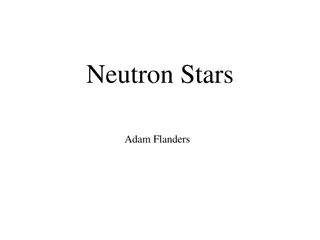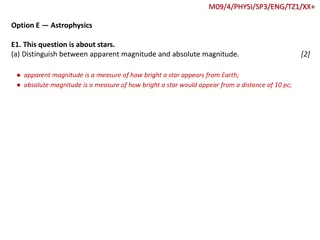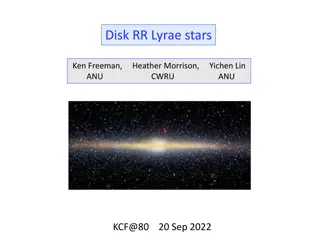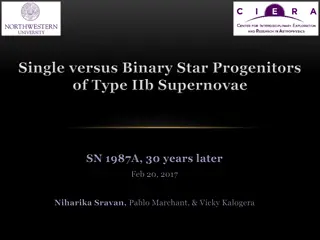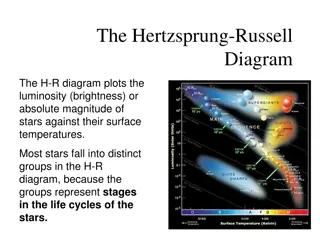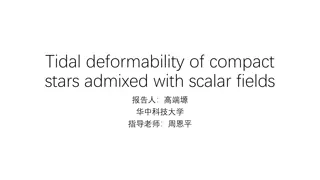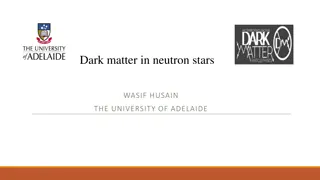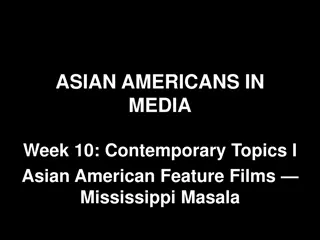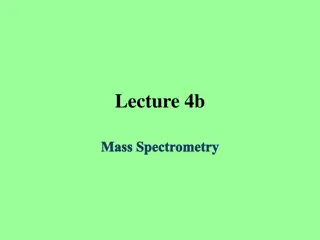Insights into Mass Loss from Mira Stars
Stefan Uttenthaler discusses technetium presence and mass loss in Mira stars, emphasizing the detection of radioactive element Tc in their spectra and exploring variations in color, dust mass-loss rate, and gas mass-loss rate among Tc-poor and Tc-rich M-type Miras. Research also delves into the s-process path and highlights similarities in gas mass-loss rates across different Miras.
Download Presentation

Please find below an Image/Link to download the presentation.
The content on the website is provided AS IS for your information and personal use only. It may not be sold, licensed, or shared on other websites without obtaining consent from the author.If you encounter any issues during the download, it is possible that the publisher has removed the file from their server.
You are allowed to download the files provided on this website for personal or commercial use, subject to the condition that they are used lawfully. All files are the property of their respective owners.
The content on the website is provided AS IS for your information and personal use only. It may not be sold, licensed, or shared on other websites without obtaining consent from the author.
E N D
Presentation Transcript
Technetium in and Mass Loss from Mira Stars Stefan Uttenthaler, Vienna XIII. Torino Workshop on AGB Stars and III. Perugia Workshop on Nuclear Astrophysics
Based on: Uttenthaler (2013, A&A) Uttenthaler, Iain McDonald, Klaus Bernhard, Sergio Cristallo, David Gobrecht (2019, A&A) Uttenthaler, in preparation XIII. Torino Workshop on AGB Stars and III. Perugia Workshop on Nuclear Astrophysics
Miras are: Long-period (P 100-1000d), large-amplitude ( V>2.5m) variables Fundamental-mode pulsators Mostly AGB stars Mira (o Cet)
The s-process path in the vicinity of 99Tc (1/2=2105 yrs) XIII. Torino Workshop on AGB Stars and III. Perugia Workshop on Nuclear Astrophysics
The radioactive element Tc, produced in the s-process, can be detected in spectra of Miras. Uttenthaler et al., 2019 Garc a-Hern ndez et al., 2013
Lets inspect the K-[22] colour (~dust mass-loss rate) as a function of period Tc-poor Tc-rich Uttenthaler et al., 2019
Also Tc-rich M-type Miras have lower K-[22] compared to Tc-poor it is not a C/O effect! Uttenthaler et al., 2019
Average SEDs of Tc-poor & Tc-rich Miras in 280<P<350d Uttenthaler et al., in preparation
If you are not yet convinced: Look at W1-W4 vs. period! Uttenthaler et al., in preparation
What about the gas mass-loss rate? Uttenthaler et al., 2019
No difference in the gas mass-loss rate!? Uttenthaler et al., in preparation
Slightly higher CO expansion velocity of Tc-poor stars?! Uttenthaler et al., in preparation
Hfner et al., 2022: Gradual Fe enrichment of wind-driving silicate grains Tc-poor stars = Fe-enriched grains & Tc-rich stars = Fe-poor grains Optical & near-IR photometry moderately affected Mid-IR flux higher by Fe-enrichment Gas mass-loss rate unaffected Wind velocity slightly higher by Fe-enrichment XIII. Torino Workshop on AGB Stars and III. Perugia Workshop on Nuclear Astrophysics
Comparison with Fe-free DARWIN models (Hfner et al.) Uttenthaler et al., in preparation
What is at the bottom of all of this? Is 26Al the culprit??? HBB candidates (Li-rich) indicate so. XIII. Torino Workshop on AGB Stars and III. Perugia Workshop on Nuclear Astrophysics
Including Li-rich HBB candidates in the K-W4 vs. P diagram: Data from Garc a-Hern ndez et al. 2007 & 2013 Preliminary analysis!
Thanks for your attention! XIII. Torino Workshop on AGB Stars and III. Perugia Workshop on Nuclear Astrophysics
XIII. Torino Workshop on AGB Stars and III. Perugia Workshop on Nuclear Astrophysics
XIII. Torino Workshop on AGB Stars and III. Perugia Workshop on Nuclear Astrophysics
XIII. Torino Workshop on AGB Stars and III. Perugia Workshop on Nuclear Astrophysics





